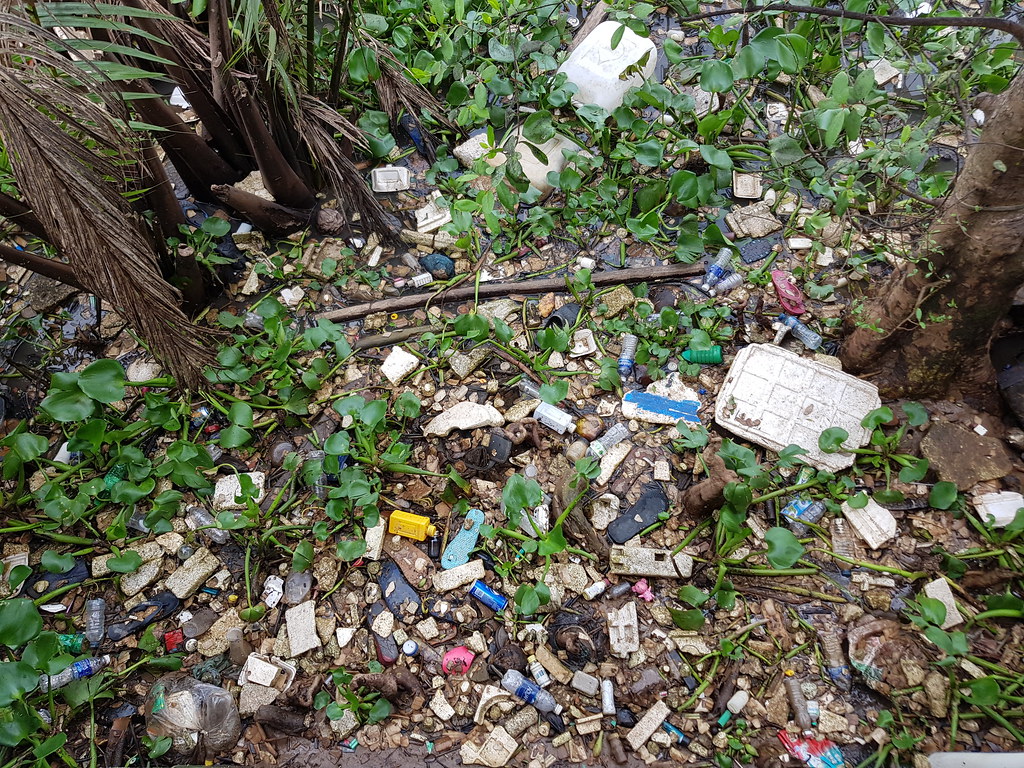
Why doesn’t plastic biodegrade?
This question was asked by Millie from Alexandroupoli, Greece.
It’s hard not to be aware of the plastics issue. Public awareness has soared in recent years, thanks largely to Sir David Attenborough and the BBC’s TV series Blue Planet II. In December 2017 the series came to an end with a shocking episode that plainly showed the impact that human activity, and especially plastic waste, has on marine life; if you haven’t already seen it you can find the episode here.
But why is plastic such an issue? Why doesn’t it just rot away like biological waste? After all, plastic is made from petroleum, which is made from the remains of ancient animals and plants – why doesn’t it biodegrade (pronounced BY-oh-dee–grade) like other kinds of rubbish?
A big part of it is what we mean by the word ‘biodegrade’. It refers to the process by which organic substances are broken down, often by bacteria, and returned to nature in their basic parts. It’s sort of like taking apart a complicated Lego model and breaking it down into its individual bricks so you can build something else. Waste biodegrades (you can also say it rots or decomposes) thanks to microbes, fungi and bacteria. They snip apart the chemical bonds that hold together the material’s molecules , which are then free to be absorbed or reused. For example fungi and bacteria can convert plant matter into nitrogen and water, which will be absorbed into the soil and help to nourish other plants, and carbon dioxide.

But the organic matter that has been turned into petroleum is no longer in its original state; has been changed by time, but also by manufacturing processes. Most plastics are made from a chemical component of petroleum called propylene, which is treated and heated until it forms long chains of chemical bonds. These are not found in nature, and so the usual fungi and bacteria that decompose natural materials are unable to even recognise them as something that can be broken down. Although they’re adaptable, fungi and bacteria have been around for millions of years while plastics have existed for less than a century – a mere moment in comparison. It may be that there are some kinds of microbes that can be persuaded to begin munching on plastic, but they’re not widely known yet.
The UV rays of sunlight can weaken plastic and cause it to soften, become brittle or fade, but they do not break plastics down in the way that we need. Being submersed in the ocean can seem to degrade plastics, but in fact they just break down into tiny pieces known as microplastics – these get swallowed by all kinds of birds and marine creatures. Hundreds of different species of fish, birds, whales, turtles, sharks and seals have been found to have consumed plastic, whether plastic bags, bottle tops or microplastics . Plastic rubbish has even been found at the bottom of the Marianas Trench, almost 11 kilometres below the ocean’s surface.

There are now such things as bioplastics and compostable plastics, but these bring their own problems. They can’t be recycled at ordinary facilities but require specialised treatment with particular microbes and high temperatures; if you chucked them on your compost heap they wouldn’t biodegrade but would just stay there, like regular plastic. They’re also more expensive to make, which can deter companies and individuals from buying and using them.
So what can we do? Although it can seem like a problem that’s too big to solve, every little change you make can help. Remember the three Rs – reduce, re-use and recycle. There are lots of ways we can recycle more as well as using less plastic in our everyday lives, and you may find some helpful ideas at the websites I’ve linked to below. If you know of any other good resources please let me know in the comments and I’ll add them on!
Ecobricks: https://www.ecobricks.org/
Kids Against Plastic: http://www.kidsagainstplastic.co.uk/
My Plastic Free Life: Plastic Free Guide
Which: How To Recycle In The UK
WWF: Ten tips to reduce your plastic footprint
Featured image: Colour at the Dump by Michael Coghlan



